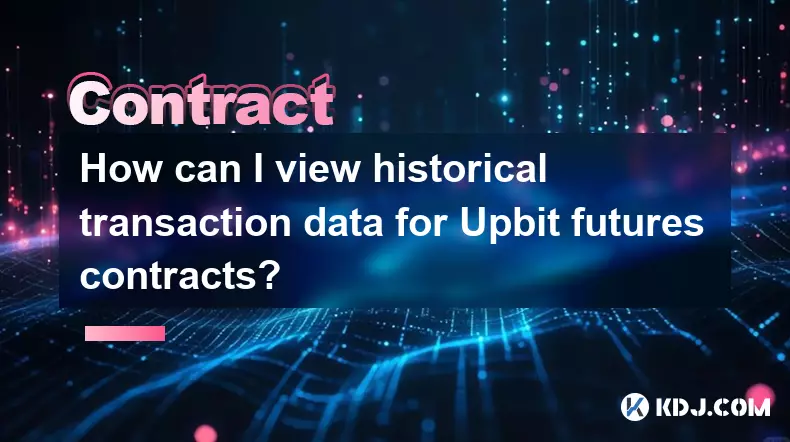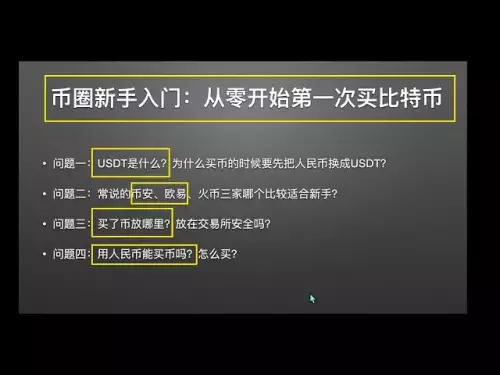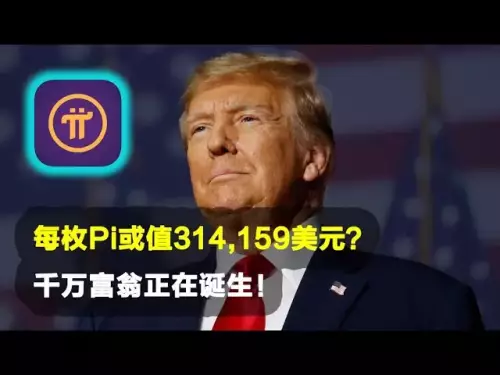-
 bitcoin
bitcoin $113137.862908 USD
0.65% -
 ethereum
ethereum $4107.436072 USD
-1.96% -
 xrp
xrp $2.908808 USD
2.59% -
 tether
tether $1.000294 USD
0.01% -
 bnb
bnb $1010.914842 USD
-1.12% -
 solana
solana $210.653310 USD
-2.16% -
 usd-coin
usd-coin $0.999776 USD
-0.01% -
 dogecoin
dogecoin $0.239360 USD
-0.04% -
 tron
tron $0.337849 USD
0.37% -
 cardano
cardano $0.807698 USD
-0.61% -
 hyperliquid
hyperliquid $45.387447 USD
0.61% -
 chainlink
chainlink $21.408287 USD
-0.92% -
 ethena-usde
ethena-usde $1.000509 USD
-0.04% -
 avalanche
avalanche $32.634682 USD
-4.77% -
 sui
sui $3.349772 USD
-0.19%
How can I view historical transaction data for Upbit futures contracts?
Upbit does not offer futures trading, so historical futures data is unavailable; users can only access spot market data via its API for analysis.
Sep 19, 2025 at 11:00 pm

Understanding Upbit Futures and Transaction Data
1. Upbit is one of the leading cryptocurrency exchanges in South Korea, known for its robust trading infrastructure and high liquidity. While Upbit primarily supports spot trading, it does not currently offer futures contracts. Users often confuse Upbit with other global exchanges like Binance or Bybit that provide extensive derivatives markets. Therefore, historical transaction data for 'Upbit futures' does not exist because such products are not available on the platform.
2. To access historical transaction data on Upbit, traders must focus on spot market trades. The exchange provides APIs that allow users to retrieve candlestick data, order book snapshots, and individual trade records for various cryptocurrency pairs. These tools are essential for technical analysis, backtesting strategies, and auditing trading performance over time.
3. The Upbit Open API supports RESTful endpoints that return JSON-formatted responses. For example, the /v1/candles/minute endpoint delivers OHLC (Open, High, Low, Close) data at different time intervals. Similarly, the /v1/trades/ticks endpoint returns recent individual trades, including price, volume, and timestamp information, which can be used to reconstruct transaction history.
4. Developers and analysts can automate data collection by writing scripts in Python, JavaScript, or other programming languages to periodically call these APIs. Storing this data in databases enables long-term analysis and visualization. It's important to respect rate limits imposed by Upbit to avoid IP blocking or service suspension.
Accessing Historical Trade Records via API
1. To retrieve historical trade data from Upbit, begin by identifying the correct API endpoint. Use /v1/trades/ticks with parameters such as market (e.g., KRW-BTC) and count (number of records). This returns a list of the most recent trades executed on the specified market.
2. Since the API only returns a limited number of records per request, pagination is necessary for deeper historical access. Implement loops that adjust timestamps or use cursor-based navigation to collect data over extended periods. Each response includes a timestamp field that helps maintain chronological continuity during batch requests.
3. Store retrieved data in structured formats like CSV or SQLite. Include fields such as trade ID, price, volume, side (ask/bid), and execution time. Organizing data efficiently allows for faster querying and integration with analytical tools like Pandas or Tableau.
4. Be aware that Upbit’s API does not provide raw historical trade logs beyond a certain window. If older data is required, third-party blockchain analytics platforms or commercial data providers may offer archived datasets, though accuracy and completeness should be verified.
Alternative Platforms Offering Futures Data
1. Traders seeking futures contract data should consider exchanges like Binance, Bybit, or OKX, which support perpetual and quarterly futures across multiple cryptocurrencies. These platforms expose comprehensive APIs that include funding rates, open interest, liquidation events, and tick-level trade histories.
2. On Binance, for instance, the futures/data/fundingRate and futures/cm/recentlyTrades endpoints deliver granular insights into derivatives market activity. Historical funding rates are particularly valuable for assessing market sentiment and carry costs in long-term positions.
3. Bybit’s API allows retrieval of orderbook changes, executed trades, and contract specifications going back several years. Their WebSockets feed supports real-time streaming, enabling precise reconstruction of market microstructure for research purposes.
4. When comparing data quality, ensure timestamps are synchronized using UTC and account for potential discrepancies due to network latency or server-side batching. Normalize prices and volumes across exchanges to enable cross-platform comparisons.
Common Questions About Cryptocurrency Exchange Data
Q: Can I get futures trading history from Upbit?A: No, Upbit does not offer futures contracts. All trading on Upbit is limited to spot markets. Therefore, there is no futures transaction history available.
Q: What format does Upbit API return data in?A: Upbit’s API returns data in JSON format. Each endpoint provides structured responses containing relevant fields such as price, volume, timestamp, and market code.
Q: Is it possible to retrieve more than 100 trades at once from Upbit?A: The maximum number of trades returned per API call is typically capped at 100. To obtain more records, you must make multiple paginated requests using time-based or cursor-based filtering.
Q: Are there rate limits on Upbit’s API?A: Yes, Upbit enforces rate limits to prevent abuse. Public endpoints generally allow around 60 requests per minute per IP address. Exceeding these limits may result in temporary blocking.
Disclaimer:info@kdj.com
The information provided is not trading advice. kdj.com does not assume any responsibility for any investments made based on the information provided in this article. Cryptocurrencies are highly volatile and it is highly recommended that you invest with caution after thorough research!
If you believe that the content used on this website infringes your copyright, please contact us immediately (info@kdj.com) and we will delete it promptly.
- Solo Leveling Meme Coin: Producer Backs Web3 Fan Engagement
- 2025-09-25 12:45:11
- Dogecoin ETF Buzz: Will DOGE Soar Again?
- 2025-09-25 12:45:11
- Crypto Casinos in 2025: Bitcoin Gambling, Trusted Platforms, and What You Need to Know
- 2025-09-25 12:25:13
- Upbit, Naver, and the Crypto App Revolution: What's the Buzz?
- 2025-09-25 12:25:13
- Layer2, Perp, and Alt-L1 Showdown: Who Will Win the DeFi Arena?
- 2025-09-25 12:30:01
- SBF's 'gm' Tweet: FTT Token's Wild Ride and Crypto Twitter's Reaction
- 2025-09-25 12:30:01
Related knowledge

How do I enable the "scalping-only" mode for Cardano (ADA) contracts?
Sep 24,2025 at 03:19am
Understanding Scalping Strategies in Crypto Derivatives1. Scalping in cryptocurrency trading refers to executing multiple short-term trades within min...

What is the maximum position limit for Cardano (ADA) contracts?
Sep 23,2025 at 11:00pm
Understanding ADA Futures and Derivatives Market Structure1. Cardano (ADA) futures contracts are offered by several major cryptocurrency derivatives e...

How can I view open interest in Cardano (ADA) contracts?
Sep 24,2025 at 07:36am
Understanding Open Interest in Cardano Derivatives1. Open interest refers to the total number of outstanding derivative contracts, such as futures or ...

What is the function of the insurance fund in Cardano (ADA) contracts?
Sep 24,2025 at 02:18am
Understanding the Role of Insurance Funds in Cardano Smart Contracts1. The insurance fund within Cardano's ecosystem is not a native feature directly ...

How can I view historical transaction records for Cardano (ADA) contracts?
Sep 24,2025 at 04:01pm
Understanding Cardano's On-Chain Data Structure1. Cardano operates on a proof-of-stake blockchain that records all transactions in blocks secured thro...

How is the funding rate charged for Cardano (ADA) contracts?
Sep 24,2025 at 07:19am
Funding Rate Mechanism for Cardano (ADA) Perpetual Contracts1. The funding rate in Cardano perpetual contracts serves as a mechanism to align the pric...

How do I enable the "scalping-only" mode for Cardano (ADA) contracts?
Sep 24,2025 at 03:19am
Understanding Scalping Strategies in Crypto Derivatives1. Scalping in cryptocurrency trading refers to executing multiple short-term trades within min...

What is the maximum position limit for Cardano (ADA) contracts?
Sep 23,2025 at 11:00pm
Understanding ADA Futures and Derivatives Market Structure1. Cardano (ADA) futures contracts are offered by several major cryptocurrency derivatives e...

How can I view open interest in Cardano (ADA) contracts?
Sep 24,2025 at 07:36am
Understanding Open Interest in Cardano Derivatives1. Open interest refers to the total number of outstanding derivative contracts, such as futures or ...

What is the function of the insurance fund in Cardano (ADA) contracts?
Sep 24,2025 at 02:18am
Understanding the Role of Insurance Funds in Cardano Smart Contracts1. The insurance fund within Cardano's ecosystem is not a native feature directly ...

How can I view historical transaction records for Cardano (ADA) contracts?
Sep 24,2025 at 04:01pm
Understanding Cardano's On-Chain Data Structure1. Cardano operates on a proof-of-stake blockchain that records all transactions in blocks secured thro...

How is the funding rate charged for Cardano (ADA) contracts?
Sep 24,2025 at 07:19am
Funding Rate Mechanism for Cardano (ADA) Perpetual Contracts1. The funding rate in Cardano perpetual contracts serves as a mechanism to align the pric...
See all articles










































































